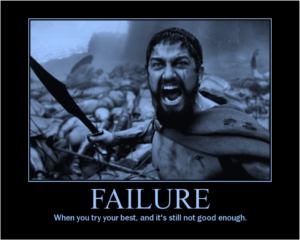The Point: We’ve all been there before as a leader… How do you effectively manage your worst employees? Every organization has them, right? They come in with a negative attitude and spread out like the ebola virus. The more negativity in the workplace, the less productivity there will be for you/your organization. So how do you effectively manage these “difficult” employees is a crucial leadership challenge. Here are some practical steps you can use to successfully identify/overcome this leadership dilemma… Enjoy!
Identifying Problem Areas
There are some defining traits of bad employees. To start off, they exhibit negative emotions toward the organization, and never miss an opportunity to make snide remarks about company leaders or co-workers. As mentioned above, such negativity can easily spread like the ebola virus in the work place.
This could eventually turns into insubordination, where the employee might refuse to perform a task, and in doing so, disrupt the entire workflow.
Secondly, bad employees also start or aggravate disputes in the workplace, thereby creating an uncomfortable team setting. This also makes problem resolution harder.
Thirdly, even if an employee isn’t overly negative and exhibit the traits described above, they may still be lazy and unmotivated. They neither focus on their work, nor let anyone do the same.
Assessing the Costs
Whenever you start to think that dealing with bad employees isn’t worth your time, remember that doing so can save your organization the expense of unnecessary hiring costs. The average cost to replace an employee is estimated at 150 percent of their annual compensation, and the cost is higher if they hold a leadership role.
Dealing with Bad Employees
Finding the source of bad employee’s bad attitude can help you manage behaviors without making them more upset. You have to consider factors like how does the employee interact with others in the workforce. You should also assess whether the change in attitude has followed a change in company policy, or their individual/personal workload. Many times, something happens in the individual’s life that triggers their bad attitude.
Once you know the root cause, confront the difficult employee privately and respectfully. Let the employee know how his or her behavior is negatively impacting the team and productivity. You have to be firm and discipline bad employees, but make it a point to keep the conversation professional and constructive!
Summary
To sum up, having crucial conversations with bad performers in your workforce is critical not only to the smooth working of your organizational operation, but also to your success as a leader.
To find out more about Tip of the Spear’s Business Advisory Services, including Leadership Development through The Leadership Challenge, please use the Contact Us page.




